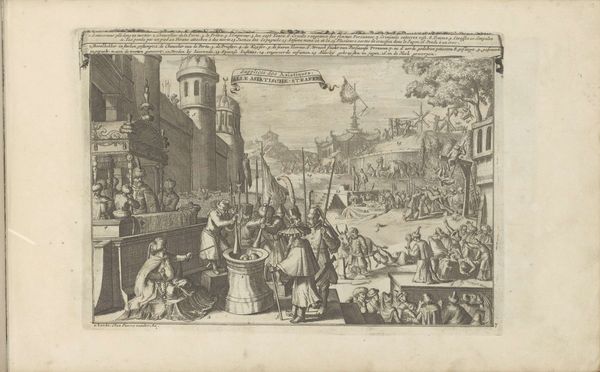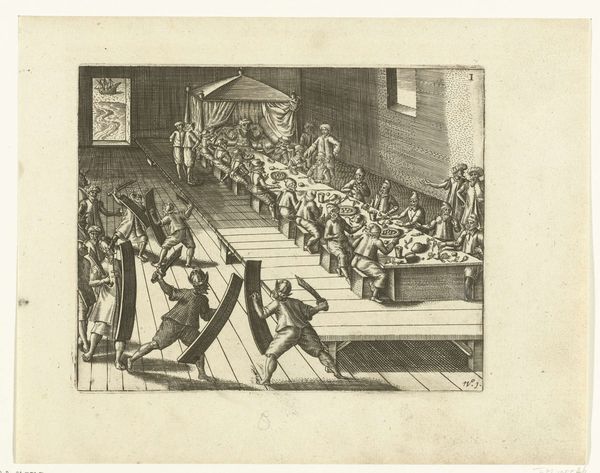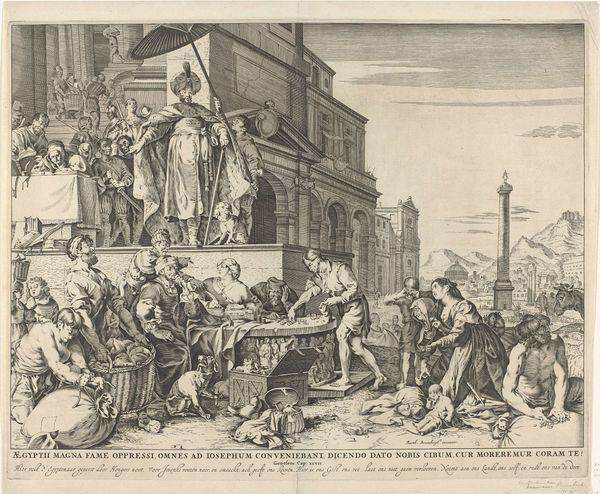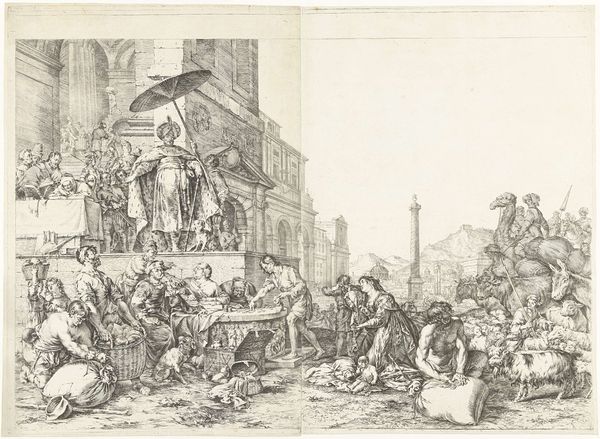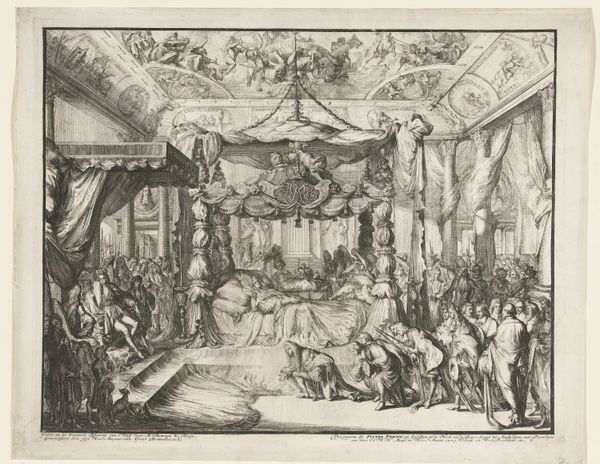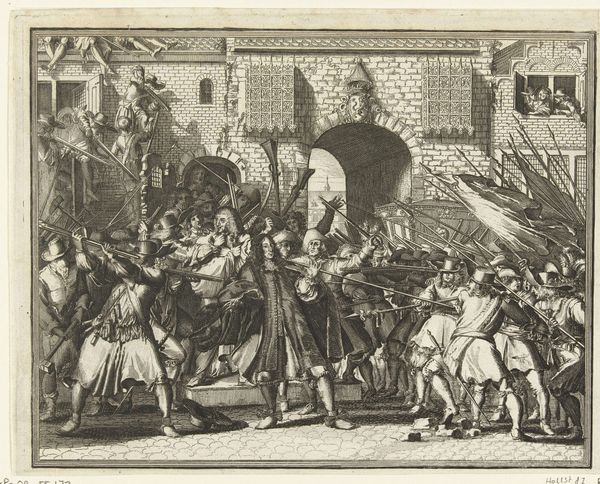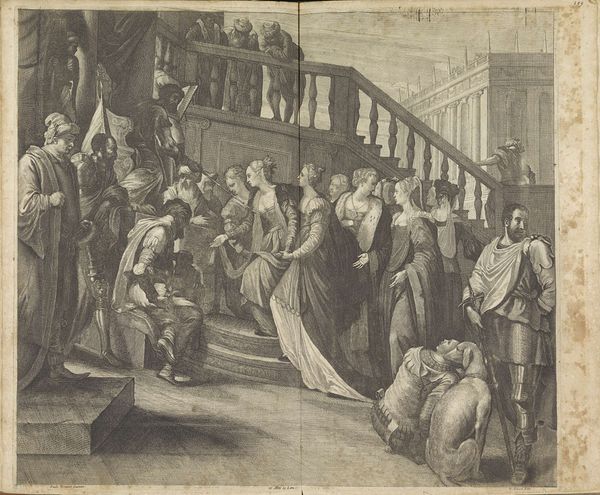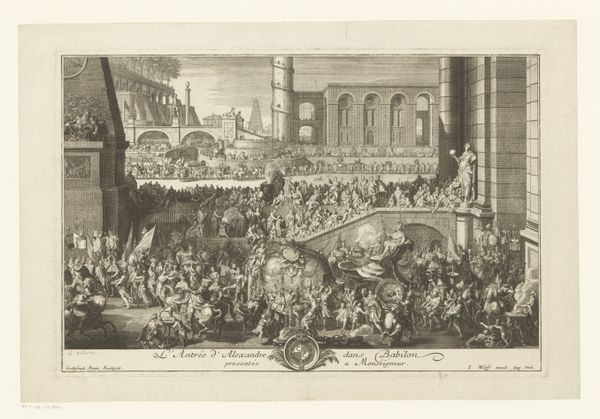
engraving
#
narrative-art
#
baroque
#
cityscape
#
history-painting
#
engraving
Dimensions: height 199 mm, width 239 mm
Copyright: Rijks Museum: Open Domain
This etching depicts the execution of Johan van Oldenbarnevelt in 1619. The central motif, the executioner’s raised sword, is a symbol laden with historical weight. Here, it signifies not just death, but the abrupt end of a life dedicated to governance and diplomacy. Consider how the raised sword echoes across time and cultures, appearing in scenes from ancient Roman sacrifices to medieval beheadings. It is a gesture that transcends its literal meaning, tapping into a collective memory of power, justice, and mortality. This image resonates with earlier depictions of martyrdom, where the act of sacrifice carries a profound, almost sacred weight. The anonymous artist taps into our deepest fears and fascinations. Just as the ancients projected their anxieties onto ritualistic acts, so too does this image serve as a vessel for communal introspection. It forces us to confront the cyclical nature of power, the fragility of life, and the ever-present dance between order and chaos. This is not merely a depiction of a historical event; it is a mirror reflecting our own human condition.
Comments
No comments
Be the first to comment and join the conversation on the ultimate creative platform.


